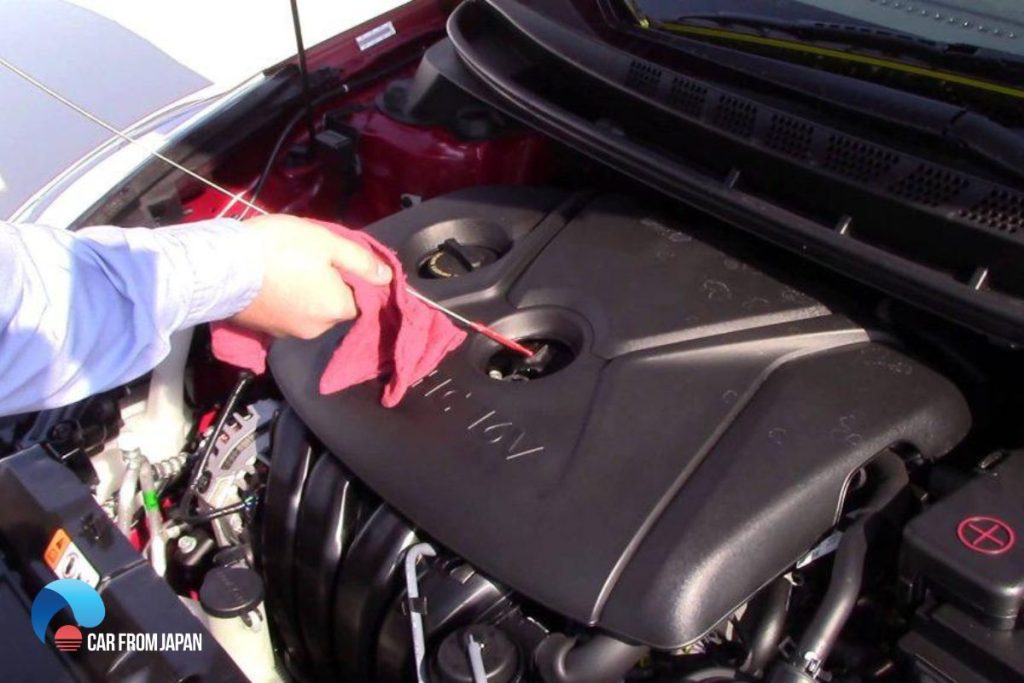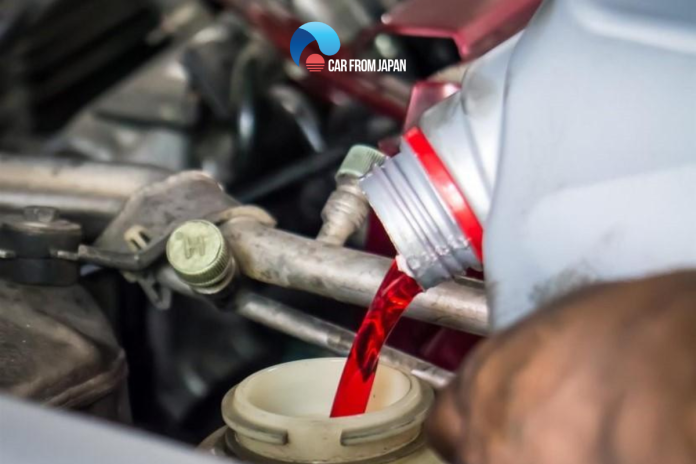Transmission fluid is the lifeblood of transmission. It ensures the smooth running of the engine and keeps the transmission temperature down since the gear generates a lot of heat due to numerous mechanical movements. Some people simply forget to change the fluid, which creates a bunch of problems. But, will there be any trouble when you overfill transmission fluid? Let’s find out.
Contents
What Are The Symptoms Of Too Much Transmission Fluid?
Every driver knows about the importance of the transmission fluid for the car so we always have the thought that overflows a little more when changing the fluid because most people assume more is better than less.
However, anything too much is not good. Adding too much transmission fluid, exceeding the specified level by the automakers, will have unpredictable consequences.
Here are 4 common symptoms you can observe if your transmission is overfilled:
- First of all, when you pull the transmission dipstick out, you will notice that the fluid looks foamy and a bubble appears in the dipstick.
- Transmission overheating – caused by failure to negate friction. If your car’s transmission is overheating, it’s important to address the issue as soon as possible to prevent damage to your vehicle’s transmission and drivetrain components.
- Difficult and delayed shifting – due to foamy fluid
- Appearance of a fluid puddle below the transmission – inspect for leakage on the transmission’s seals
- Gear slippage
What Happens If You Overfill Transmission Fluid?
The main function of transmission fluid is to minimize the friction between the components in the gearbox. However, it can’t do its job properly when you overflow the fluid container. The response will be a cranky gearbox. Why does this happen?
Because of foam! Overfill transmission fluid forms foam inside the gearbox. The formation of foaming happens when the rotating gears splash in the overfilled reservoir. It triggers excessive temperature and causes a chemical reaction, leading to the creation of foam.
The foam affects the viscosity of the oil. For this reason, the fluid does not flow properly through the gears when you shift them. The lack of lubrication will cause the transmission components to overheat, leading to mechanical damage and failure of the transmission.
Dealing with a cranky gearbox? Explore the option of a damaged car buyer. These services not only understand the urgency of your situation but also provide a fair value for your damaged vehicle.

While the consequence is the same, automatic and manual transmissions respond differently to too much transmission fluid. In an auto transmission, the gears will compress, causing the foam to implode inside. It will affect the hydraulic pressure and cause further damage because the auto gearbox relies on that pressure to work properly.
An overfilled manual transmission, on the other hand, will show issues with the clutch. The excess oil will leak from the vent affect the clutch and result in a gear-shifting problem.
Read more: Can You Drive When the Transmission Temperature Light Is On?
How Much Fluid Should the Transmission Have?
You have to add half a quart at a time and keep taking readings with a dipstick. When it shows ‘full’, run the engine and put the gear in the ‘idle’ mode. Recheck the oil level when the engine is hot.
Stop pouring oil when the dipstick indicates that the oil level is at the top end of the ‘hot’ mark. If the engine is cold, the level of the oil should be at the top end of the ‘cold’ mark. When the engine is neither hot nor cold, the fluid level should be in between these two marks.

Most transmissions have a capacity between 9 and 13 quarts. Check the owner’s manual to know about the exact amount. However, you should always add a little at a time to avoid too much transmission fluid.
If you had the engine warmed up and the transmission fluid was still hot, the fluid level shouldn’t be more than a quarter inch above the hotline or else. At this time, there could be an issue with your transmission and you might want to think about reducing how much the transmission fluid is in your tank.
You can’t overflow some gearboxes because of the way they have been designed. They have a system that will flow out or spill the extra oil.
Watch the video below to learn how to check transmission fluid:
What Should You Do with an Overfilled Transmission?
If your car shows the symptoms of overflow, avoid complications and mechanical damage just by siphoning or draining the excess liquid. You can do this by using an extraction pump or a filler tube that you can buy online. Depending on the design of your car, it’ll either have a cooler line or a pan drain plug, both of which you simply remove to drain the liquid.
Here are the steps you can take:
- Check the transmission fluid level: Use the dipstick to check the transmission fluid level. If the fluid level is above the maximum level, then your transmission is overfilled.
- Drain the excess fluid: If the transmission fluid is overfilled, you will need to remove the excess fluid. You can do this by using a fluid pump or a siphon pump to suck out the excess fluid from the dipstick tube. Make sure to remove only the excess fluid and not to drain too much of the transmission fluid.
- Check for leaks: Overfilling of the transmission fluid can be caused by a leak. Therefore, it’s important to check for any signs of leakage, such as wet spots or puddles under the vehicle. If you find a leak, repair it before adding more transmission fluid.
- Test drive the vehicle: After removing the excess fluid, take your vehicle for a short test drive to ensure that the transmission is functioning properly. Check for any unusual noises or vibrations during the drive.
Final Words
In conclusion, while maintaining proper transmission fluid levels is essential for a healthy and long-lasting transmission, overfilling can be just as detrimental as underfilling.
Too much fluid can lead to a host of problems, from increased pressure and overheating to foaming and slippage, ultimately resulting in costly repairs or even complete transmission failure.
By understanding the correct fluid level for your vehicle and following the manufacturer’s recommendations, you can avoid these pitfalls and ensure your transmission operates smoothly for years to come. Remember, when it comes to transmission fluid, a little goes a long way.




Thanks for the lesson keep it up
Thank s for that lesson keep on
That’s helpful
What make an automatic car to delay when drive or reverse gear is engage
My car uses cvt oil and from your lesson you have not talked about it cvt oil.I would be glad add my concerns.
In Zambia it’s difficult to get original oil making me fear to change oil same with spares. What can I do?
Thank for the instruction. I will be ready to follow this instructions in order to give long life of my car.
After how long should hydrolic fluid for an automatic gear box be changed?
What about the vehicles without gear dipstick???! Toyota Axio
You have no choice but to go to a shop or drop the pan yourself and guess.